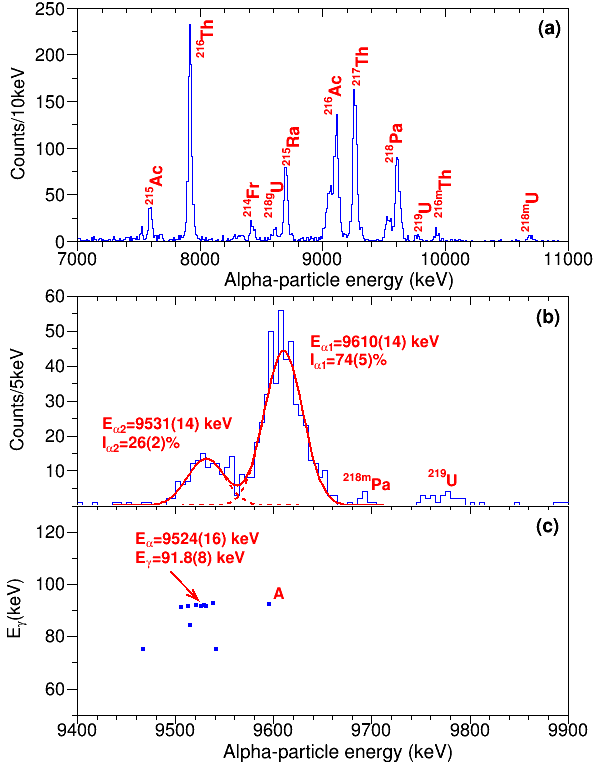
Researchers from the Institute of Modern Physics (IMP) of the Chinese Academy of Sciences and their collaborators have recently found an isomeric state in 218Pa for the first time. The result was published in Physics Letters B.
An isomeric state generally refers to a long-lived exited state. Isomeric transitions in nuclei near closed proton or neutron shells are of special interest, for they provide relatively pure and detailed information on the single-particle structure of these nuclei.
In previous studies of odd-proton N=127 isotones, a low-lying α-decaying isomeric state has been found in 210Bi, 212At, 214Fr and 216Ac. However, it was not clear whether there was an isomeric state in 218Pa.
By means of α and γ spectroscopy, the experiment of 218Pa was performed at the Heavy Ion Research Facility in Lanzhou (HIRFL). The nucleus was produced in the fusion reaction 40Ar+182W and separated in flight by the gas-filled recoil separator.
An α-decaying isomeric state was firstly identified in 218Pa. From the N=127 systematics and shell model calculations, it was inferred that the ground state and the isomeric state in 218Pa were expected to be 8- and 1- states, respectively.
This indicates that the spins and parities for 218Pa do not follow the trend of the 1- ground state and the 9- or 8- isomeric state as observed in lighter odd-proton N=127 isotones. Researchers thought that this phenomenon might be caused by the change of particle-particle interaction to hole-particle interaction with increasing proton number.
Besides, the previously known α-lines of 218Pa as well as some α-γ coincidence events were measured with improved precision. The two known α-lines were newly assigned to the decay of the ground state in 218Pa. The result removed the disagreement on the assignments of the 9524 keV α-line in previous studies.

Fig. 1. Alpha-decay schemes of the odd-proton N=127 isotones from At to Pa. The α-branch marked by gray is tentative. Energies are given in keV. (Image by YANG Huabin)

Fig. 2. Results from a correlation analysis of the type ER-α-γ: (a) The spectrum of α particles correlated to recoil events within 15 ms; (b) The spectrum of α particles correlated to recoil events within 1.2 ms in the 218Pa region. Red lines are the results from fit; (c) α-γ coincidences associated with the α decay of 218Pa. (Image by YANG Huabin)

86-10-68597521 (day)
86-10-68597289 (night)

52 Sanlihe Rd., Xicheng District,
Beijing, China (100864)

